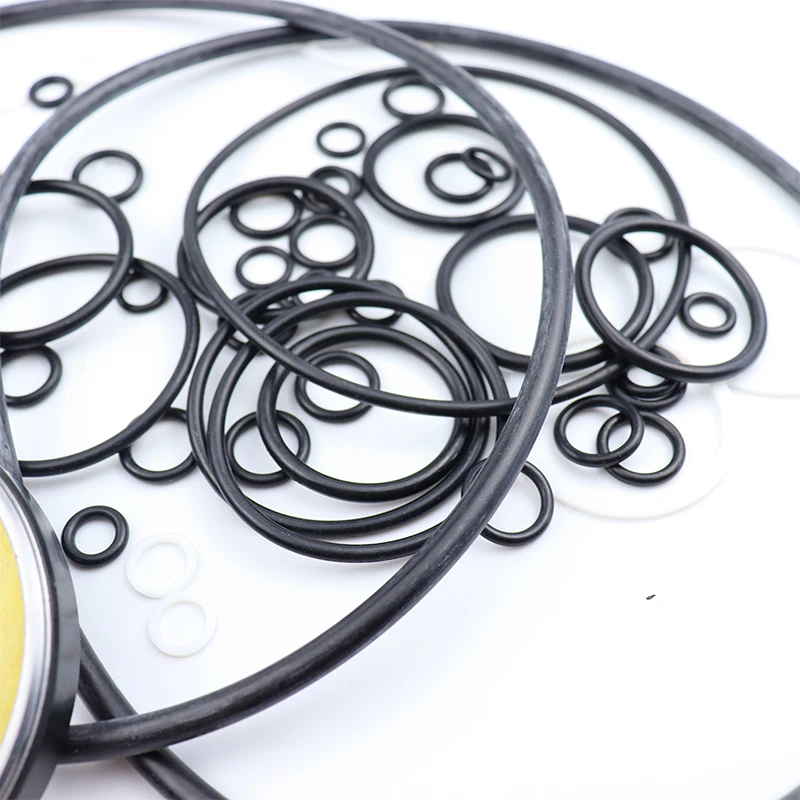Dec . 04, 2024 09:57 Back to list
hydraulic seal repair
Hydraulic Seal Repair A Comprehensive Guide
Hydraulic systems are fundamental in various industries, from manufacturing to agriculture. They rely on hydraulic seals to maintain pressure and prevent fluid leaks. Over time, these seals can wear out due to constant exposure to high pressure, temperature fluctuations, and abrasive materials. A failure in hydraulic seals can lead to significant downtime and costly repairs. Therefore, understanding hydraulic seal repair is crucial for maintaining the efficiency and functionality of these systems.
Understanding Hydraulic Seals
Hydraulic seals serve to prevent the leakage of fluid between moving parts in hydraulic machinery. They come in various materials, including elastomers and plastics, designed to withstand specific pressures and temperatures. The primary types of hydraulic seals include O-rings, U-cups, and backup rings, each tailored for distinct applications. The effectiveness of these seals is vital for the proper functioning of hydraulic systems, as they control fluid flow, reduce wear and tear on components, and promote operational efficiency.
Signs of Seal Failure
Recognizing the early signs of hydraulic seal failure is crucial for timely repairs. Common indicators include
1. Fluid Leaks The most obvious symptom of a failing seal is visible fluid leakage around the cylinder. This can result in reduced efficiency and increased operational costs.
2. Reduced Pressure If the system cannot maintain consistent pressure, it may indicate seal wear. This can lead to inadequate hydraulic force and compromised system performance.
3. Increased Heat Overheating in hydraulic systems can be caused by excessive friction between moving parts due to seal failure. This can accelerate wear on other components.
4. Unusual Noise Grinding or whining noises from the hydraulic system can signal that seals are worn or damaged, causing parts to rub against each other improperly.
Repair Process
Repairing hydraulic seals may seem daunting, but with a systematic approach, it can be accomplished effectively. Here’s a step-by-step guide to the repair process
1. Safety First Before starting any repair, ensure the hydraulic system is depressurized and all safety protocols are followed to prevent accidents.
hydraulic seal repair

2. Identify the Issue Inspect the seals and the surrounding components. Look for visible damage, wear, or contamination that may have caused the seal failure.
3. Disassemble the System Carefully disassemble the hydraulic components to access the damaged seals. Keep track of all parts and their arrangement for reassembly.
4. Remove the Old Seal Using appropriate tools, remove the damaged seals from the grooves without scratching or damaging the housing.
5. Clean the Surfaces Thoroughly clean the seal grooves and surfaces to remove any debris, old seal material, or contaminants. This step is critical for ensuring the new seal fits correctly and seals effectively.
6. Install New Seals Choose seals that match the specifications of the original components. Carefully install the new seals, ensuring they sit correctly in their grooves to avoid leaks.
7. Reassemble the System Once the new seals are in place, carefully reassemble the hydraulic components in the correct order. Make sure all fasteners are tightened to the manufacturer’s specifications.
8. Testing After reassembly, test the hydraulic system under its normal operating conditions. Monitor for leaks and ensure that the system maintains pressure effectively.
Preventive Measures
To prolong the life of hydraulic seals, regular maintenance is essential. Here are some preventive measures to implement
- Routine Inspections Regularly inspect seals and hydraulic components to catch potential issues early. - Use Quality Fluids Ensure the use of proper hydraulic fluids that are compatible with the seals to avoid chemical damage. - Temperature Monitoring Keep an eye on operating temperatures, as excessive heat can lead to faster wear. - Dust and Contamination Control Implement measures to minimize contaminants that could affect seal integrity.
Conclusion
Effective hydraulic seal repair is vital for the longevity and efficiency of hydraulic systems. By understanding the signs of seal failure and following a systematic repair process, operators can minimize downtime and maintain optimal performance. Regular maintenance and preventive measures can further extend the lifespan of hydraulic seals, ensuring smooth operations and reduced costs.
-
TCN Oil Seal Metal Ring Reinforcement for Heavy Machinery
NewsJul.25,2025
-
Rotary Lip Seal Spring-Loaded Design for High-Speed Applications
NewsJul.25,2025
-
Hydraulic Cylinder Seals Polyurethane Material for High-Impact Jobs
NewsJul.25,2025
-
High Pressure Oil Seal Polyurethane Coating Wear Resistance
NewsJul.25,2025
-
Dust Proof Seal Double Lip Design for Construction Equipment
NewsJul.25,2025
-
Hub Seal Polyurethane Wear Resistance in Agricultural Vehicles
NewsJul.25,2025
-
The Trans-formative Journey of Wheel Hub Oil Seals
NewsJun.06,2025
Products categories
















